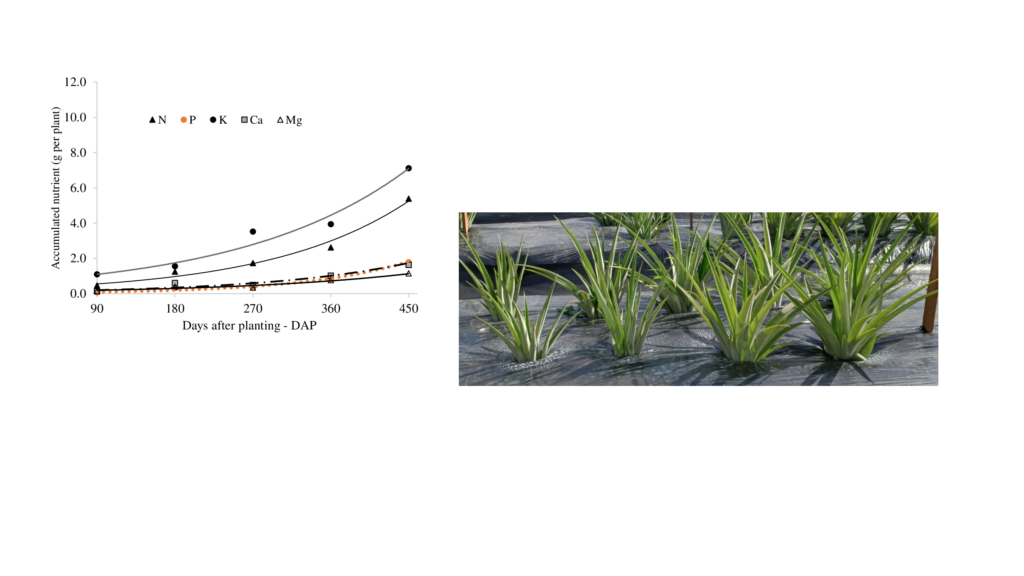Rev. Bras. Ciênc. Solo.2025;49:e0240197.
Macronutrient uptake during the plant cycle of pineapple cv. BRS Imperial cultivated in soil with and without plastic mulch cover
12/Nov/2025
DOI: 10.36783/18069657rbcs20240197
Graphical Abstract

Highlights
The plastic soil cover contributes to increase dry mass accumulation of pineapple.
The plastic soil cover favors the macronutrient uptake of pineapple.
The leaves accumulate most of the macronutrients absorbed by pineapple.
ABSTRACT
Pineapple is a nutrient-demanding plant and information regarding the amounts accumulated in its organs is essential in decision-making for management practices and fertilization recommendations. This study aimed to determine the macronutrient absorption during the plant cycle of pineapple cv. BRS Imperial that was cultivated in sandy loam soil with and without plastic mulch cover. Plants were grown at a spacing of 0.9 × 0.4 × 0.4 m, 38,460 plants per hectare, irrigated by drip and fertilized according to soil analysis, with fertigation on a weekly basis. Experimental design was in randomized blocks, with three replications and treatments arranged in a split-plot scheme, with two soil covers (with and without plastic mulch) in the plots, and five time periods in the subplots (90, 180, 270, 360, and 450 days after planting). Soil cover with plastic mulch promoted higher leaf, stem, and root dry mass in pineapple cv. BRS Imperial throughout the plant cycle. Mulch soil cover determined higher accumulation of all macronutrients in the decreasing order of K, N, Ca, P and Mg. Potassium was the most accumulated in the leaves, whereas N in the stem and roots. Potassium showed higher accumulation rates until 270 days and lower ones up to 450 days after planting; the other macronutrients increased the rates from 270 days after planting. Both dry mass and macronutrient accumulation were much higher in the leaves than in the stem and the roots throughout the plant cycle.
28

